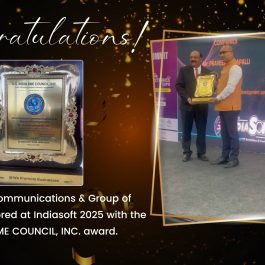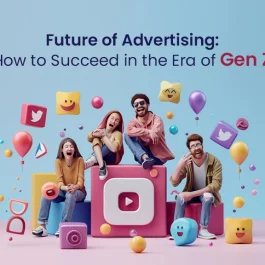4 min read

In today’s digital age, video marketing has become an essential tool for businesses to connect with their audience. With the rise of social media and streaming platforms, video content has proven to be one of the most effective ways to engage and captivate viewers. In this blog post, we will explore the latest video marketing statistics that every modern marketer should know to create successful video campaigns.
Table of Contents
The Growth of Video Marketing
Video marketing has seen exponential growth in recent years, with more and more businesses incorporating video into their marketing strategies. According to a report by HubSpot, 85% of businesses use video as a marketing tool, up from 61% in 2016. This significant increase highlights the effectiveness of video in engaging audiences and driving results for businesses of all sizes.
Video Consumption Trends
With the proliferation of smartphones and high-speed internet, video consumption has skyrocketed across the globe. Studies show that the average person watches more than an hour and a half of online video content per day, with 15% of viewers spending more than three hours watching videos. This trend indicates a shift towards video as the preferred form of content consumption for many individuals.
The Impact of Video on Purchase Behavior
Videos have a direct impact on consumer purchase behavior, with 64% of consumers stating that they are more likely to buy a product after watching a video about it. Additionally, 90% of users say that product videos are helpful in the decision-making process. These statistics underscore the importance of incorporating video into e-commerce strategies to drive sales and conversions.
Social Media and Video Engagement
Social media platforms have become key channels for video distribution, with Facebook alone generating an average of 8 billion video views per day. Videos on social media receive 1200% more shares than text and images combined, making them highly effective in driving engagement and virality. Marketers should leverage the power of social media to reach a wider audience and increase brand visibility through video content.
Mobile Video Consumption
Mobile devices play a significant role in video consumption, with more than 50% of videos being viewed on mobile. On-the-go consumers prefer watching videos on their smartphones, making mobile optimization crucial for reaching and engaging this audience. Marketers should ensure that their video content is optimized for mobile viewing to provide a seamless experience for mobile users.
Video SEO and Search Rankings
Video content can also boost search engine rankings, with websites featuring videos being 53 times more likely to appear on the first page of Google search results. By incorporating relevant keywords, tags, and descriptions, marketers can improve their video SEO and increase visibility in search engine results pages. This highlights the importance of optimizing video content for search engines to drive organic traffic to websites.
The Rise of Live Streaming
Live streaming has gained popularity in recent years, with platforms like Twitch, YouTube Live, and Facebook Live attracting millions of viewers. Studies show that 80% of audiences would rather watch live video from a brand than read a blog, highlighting the appeal of real-time content. Marketers can take advantage of live streaming to connect with their audience in a more authentic and interactive way, fostering engagement and building brand loyalty.
Video Analytics and Measurement
Measuring the performance of video content is essential for understanding its impact and optimizing future campaigns. Conversion rates, click-through rates, engagement rates, and views are important metrics to monitor. By analyzing these metrics, marketers can gain insights into audience behavior and preferences, allowing them to refine their video strategies for maximum effectiveness.
The Role of Personalization in Video Marketing
Personalized video content has been shown to drive higher engagement and conversion rates, with 72% of consumers stating that they would prefer to watch a video tailored to their interests. By leveraging data and customer insights, marketers can create personalized video experiences that resonate with their target audience on a deeper level. Personalization enhances the effectiveness of video marketing campaigns by delivering relevant content to viewers based on their preferences and behaviors.
Tips for Successful Video Marketing Campaigns
Define Your Goals
Before creating a video marketing campaign, it’s important to clearly define your goals and objectives. Whether you aim to increase brand awareness, drive website traffic, or boost sales, having a clear goal in mind will guide your video creation and distribution strategy.
Know Your Audience
Understanding your target audience is crucial for creating video content that resonates with viewers. Conduct market research to identify your audience’s demographics, preferences, and behaviors, and tailor your videos to their interests and needs.
Create High-Quality Content
High-quality video content is essential for capturing and retaining viewers’ attention. Invest in professional equipment, editing software, and talent to ensure that your videos are visually appealing, engaging, and informative.
Optimize for Different Platforms
Different social media platforms have varying video requirements and best practices. Tailor your videos for each platform by optimizing aspect ratios, video length, and captions to maximize engagement and reach.
Incorporate Calls to Action
Include clear calls to action (CTAs) in your videos to prompt viewers to take the desired action, whether it’s visiting your website, subscribing to your channel, or making a purchase. CTAs increase viewer engagement and drive conversions.
Analyze and Iterate
Track the performance of your video marketing campaigns using analytics tools to measure key metrics such as views, engagement, and conversions. Use these insights to refine your video strategies, experiment with different approaches, and continuously improve your campaigns.
Stay Consistent
Consistency is key to building brand awareness and maintaining audience engagement. Create a content marketing calendar and post videos regularly to keep your audience engaged and informed about your brand.
By following these tips and leveraging the latest video marketing statistics, modern marketers can create successful video campaigns that resonate with their audience, drive results, and elevate their brand presence in today’s competitive digital landscape.
Conclusion
In conclusion, video marketing continues to be a powerful tool for modern marketers looking to engage audiences and drive results. By staying informed about the latest video marketing statistics and trends, marketers can create compelling video content that resonates with their target audience and achieves their business objectives. Incorporating video into marketing strategies is no longer optional but essential for businesses looking to stay competitive in today’s digital landscape.
Published: March 6th, 2024








